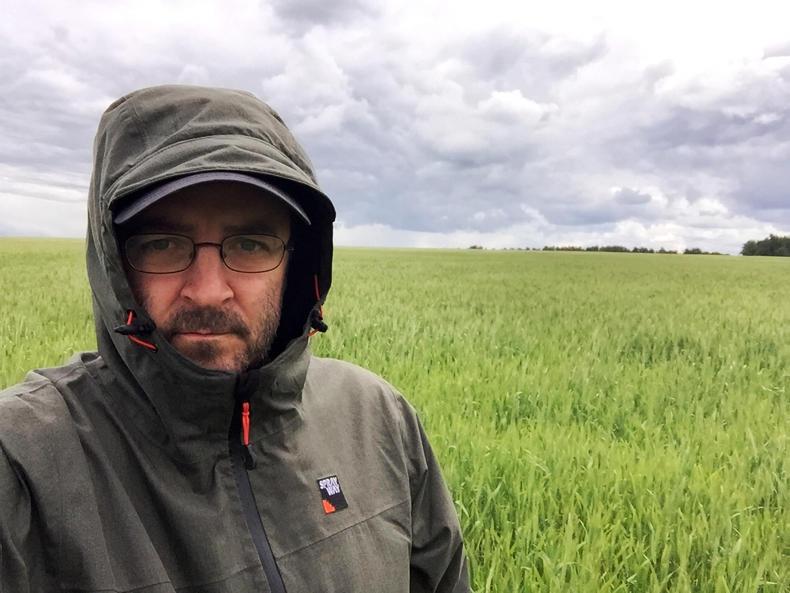How did you find yourself in the Black Sea region as an agronomist?
In the 1990s when the Soviet Union opened up, I started to get requests to go over and provide agricultural training to farmers. I started travelling more and more to Belarus, Ukraine, Kazakhstan and Russia. These are really interesting places historically and agriculturally but were very poor after the breakup of Soviet Union. I’ve developed a few techniques to score the crops rapidly. With 17m ha of wheat in Russia, we could drive 4,000km in one tour to score the crop and assess the yield potential.
What condition are this season’s winter crops in?
Russia winter wheat plantings are up by just short of a million hectares to 17.2m ha, while Ukraine plantings are slightly down on last year at 5.8m ha. From my crop tour in November, Russian winter wheat was in absolutely fine condition. In Ukraine, the crop is not as good but it was generally fine. So both crops went into the winter in healthy condition.
Why is the information you collect important?
I realised there was a lack of reliable, independent information on the Black Sea. Farmers need to know if the crop in the Ukraine or Russia is going to be big because that’s going to affect price. There’s a complete lack of appreciation for what’s happening in the Black Sea region and the scale out there.
How damaging is the cold to crops in the Black Sea?
The last few nights it’s been down to -20°C in Russia and Ukraine. But with 20 to 30cm of snow sitting on top of the ground, the crop will be fine. It’s when you’ve snow melting it can have problems. They reckon 5% to 10% of the crop is killed every year by the cold. It can be as high as 25% and then it starts to have an impact.
What risks will crops face between now and harvest?
The next issue will be rainfall as we move in to May, June and July. In the Black Sea, the heat can actually have the greatest impact on the crop. I’m a farmer, so I understand the law that nature balances itself out. The last couple of years have been wet seasons and good harvests, which suggests that they’re probably due a bad one.
What sort of yields do farmers in the Black Sea achieve?
In Ukraine, the average yield of wheat is about 1.7t/acre and it’s about 1.2t/acre in Russia. It was up last year in both countries. In some oblasts of Ukraine, the average yield is between 2.2t/acre and 2.4t/acre and that’s even comparable to western Europe. The problem is that there are a lot of small-scale peasant farms still out there not achieving anywhere near that and that’s bringing your average down.
Read more
Global focus: touring the Black Sea
How did you find yourself in the Black Sea region as an agronomist?
In the 1990s when the Soviet Union opened up, I started to get requests to go over and provide agricultural training to farmers. I started travelling more and more to Belarus, Ukraine, Kazakhstan and Russia. These are really interesting places historically and agriculturally but were very poor after the breakup of Soviet Union. I’ve developed a few techniques to score the crops rapidly. With 17m ha of wheat in Russia, we could drive 4,000km in one tour to score the crop and assess the yield potential.
What condition are this season’s winter crops in?
Russia winter wheat plantings are up by just short of a million hectares to 17.2m ha, while Ukraine plantings are slightly down on last year at 5.8m ha. From my crop tour in November, Russian winter wheat was in absolutely fine condition. In Ukraine, the crop is not as good but it was generally fine. So both crops went into the winter in healthy condition.
Why is the information you collect important?
I realised there was a lack of reliable, independent information on the Black Sea. Farmers need to know if the crop in the Ukraine or Russia is going to be big because that’s going to affect price. There’s a complete lack of appreciation for what’s happening in the Black Sea region and the scale out there.
How damaging is the cold to crops in the Black Sea?
The last few nights it’s been down to -20°C in Russia and Ukraine. But with 20 to 30cm of snow sitting on top of the ground, the crop will be fine. It’s when you’ve snow melting it can have problems. They reckon 5% to 10% of the crop is killed every year by the cold. It can be as high as 25% and then it starts to have an impact.
What risks will crops face between now and harvest?
The next issue will be rainfall as we move in to May, June and July. In the Black Sea, the heat can actually have the greatest impact on the crop. I’m a farmer, so I understand the law that nature balances itself out. The last couple of years have been wet seasons and good harvests, which suggests that they’re probably due a bad one.
What sort of yields do farmers in the Black Sea achieve?
In Ukraine, the average yield of wheat is about 1.7t/acre and it’s about 1.2t/acre in Russia. It was up last year in both countries. In some oblasts of Ukraine, the average yield is between 2.2t/acre and 2.4t/acre and that’s even comparable to western Europe. The problem is that there are a lot of small-scale peasant farms still out there not achieving anywhere near that and that’s bringing your average down.
Read more
Global focus: touring the Black Sea






 This is a subscriber-only article
This is a subscriber-only article










SHARING OPTIONS: